Best season to see rice fields in Ha Giang
Ha Giang shares the same rice harvest period as the renowned rice fields of Sapa, featuring only one rice harvest season per year. Here are the distinct stages of the rice fields:
- April – May: Planting season, submerged fields create a stunning mirror effect
- June – August: Rice growth season, fields become lush green
- September – October: Harvesting season, fields turn golden yellow, ethnic minorities working in the fields
- Best time to visit: August and September for rice harvest, May for the mirroring effect.
Tips for seeing the rice fields
- Visit during the right season: Make sure to plan your visit during the rice harvest season to witness the beautiful rice fields in their full glory.
- Hire a guide: Since many of the rice fields in Ha Giang are off the beaten track, it’s advisable to hire a guide who can lead you to the best spots and provide insights into the local ethnic communities.
- Embark on a trekking adventure: While you can catch glimpses of the rice fields from the road, consider embarking on a trekking journey to fully immerse yourself in their beauty. Opt for multi-day treks that allow you to explore remote areas and stay in local homestays along the way, offering an authentic cultural experience.
- Pack appropriately: As the best time to visit coincides with the rainy season, be prepared for occasional rain showers. Pack a rain poncho and wear sturdy shoes that can handle muddy terrain. Additionally, dress in light clothing to stay comfortable in the warm weather.
- Show respect: When visiting the rice fields and interacting with local communities, it’s important to show respect. Avoid walking directly in the rice fields, as it can damage the crops that sustain the livelihood of the local farmers. Dispose of your trash responsibly and always ask for permission before taking photos of the locals, respecting their privacy and cultural traditions.
#1. Hoang Su Phi
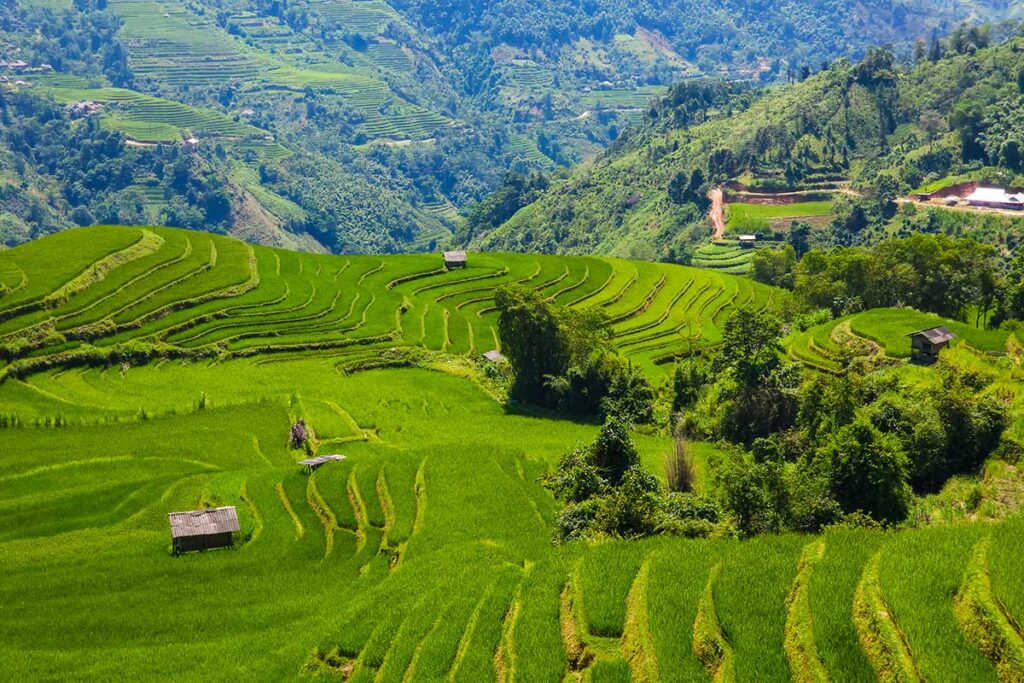
Considered the best terraced rice fields in not just Ha Giang, but all of Vietnam, Hoang Su Phi offers an authentic and off-the-beaten-track experience. With minimal tourist presence, except during the rice harvest season when photography enthusiasts flock here, it remains untouched and undeveloped.
The area is home to numerous ethnic minority communities, showcasing their unique lifestyles. Access to Hoang Su Phi can be challenging as there are no direct buses from Hanoi, but it is worth the effort, especially for trekking enthusiasts.
#2. Xin Man

Located even further than Hoang Su Phi, Xin Man boasts breathtaking rice fields that can be combined with a visit to Hoang Su Phi. This remote region is dotted with small local villages and majestic mountains, contributing to the stunning terraced rice fields that cascade along the slopes.
The proximity of Xin Man to the towering Kieu Lieu Ti mountain, one of the highest in Ha Giang, enhances the scenic beauty. Traveling to Xin Man may involve navigating rugged roads due to the lack of major towns, but the sense of being in the middle of nowhere adds to its allure.
#3. Mau Due
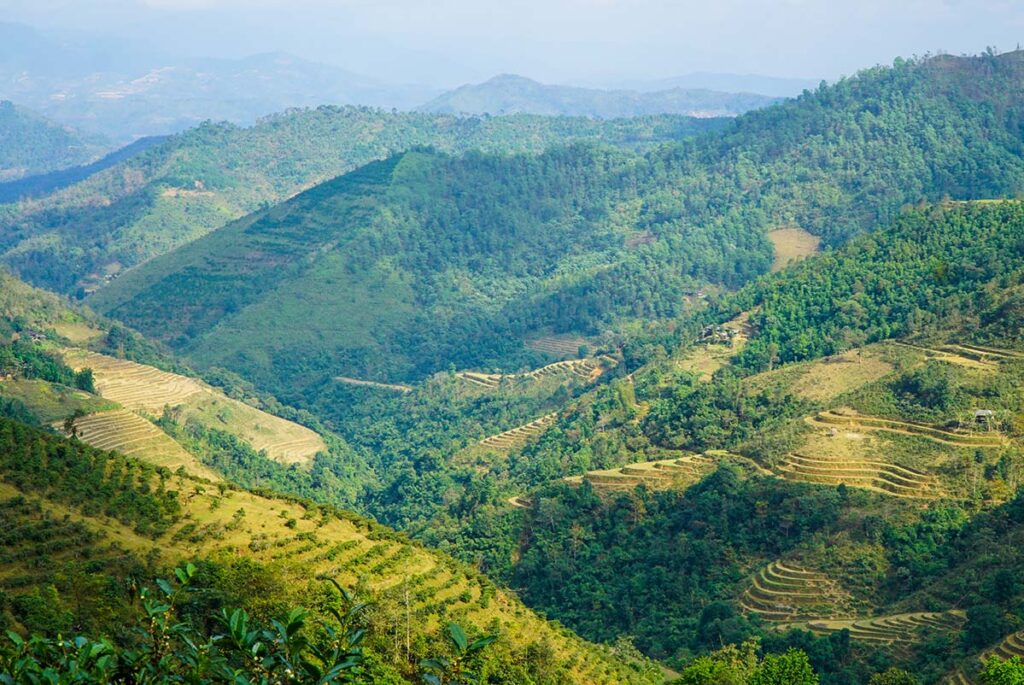
Situated along the road between Meo Vac and Ha Giang City, Mau Due is a fantastic location to witness terraced rice fields as part of the Ha Giang Loop. While many mountains in Ha Giang are too rugged for agricultural cultivation, Mau Due’s terraces defy the challenging landscape. Exploring this area is recommended if you have more time on the Ha Giang Loop itinerary. Keep in mind that some parts of Mau Due feature steep and rough terrain, adding a touch of adventure to the experience
#4. Du Gia
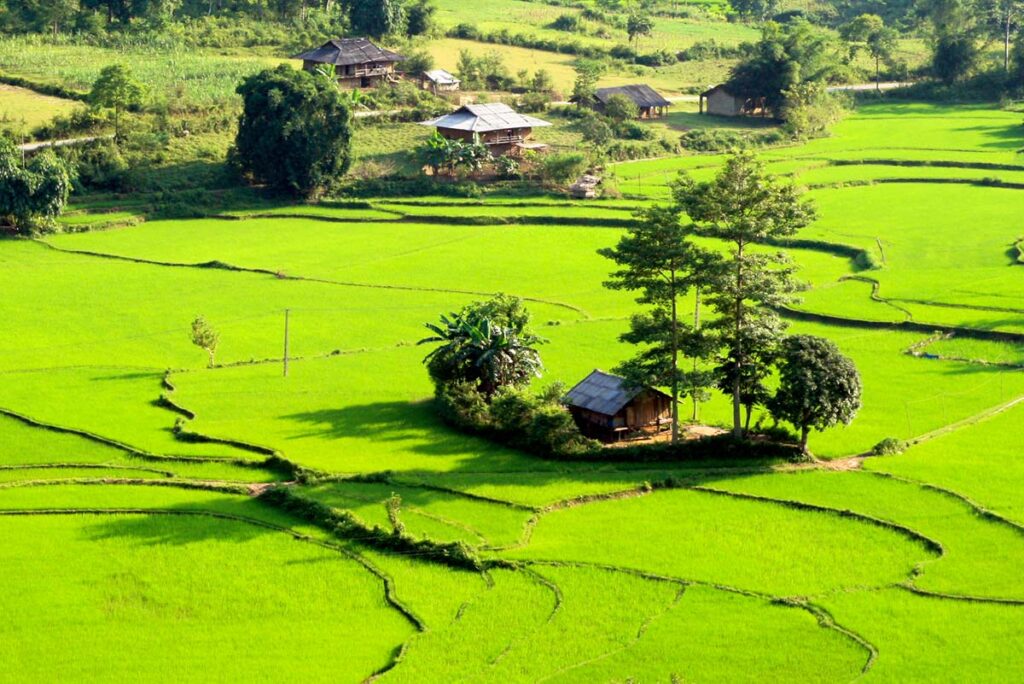
Though lacking terraced rice fields, Du Gia charms travelers with its lush green rice field valleys. It is a popular stop for travelers embarking on the 4-day Ha Giang Loop journey.
Immerse yourself in the local culture by staying in a traditional wooden stilt house homestay, hosted by the ethnic Thay minority. From your accommodation, you can enjoy picturesque views of the rice fields. Don’t miss the opportunity to cool off in the small waterfall and soak up the serene ambiance.
#5. Thon Tha
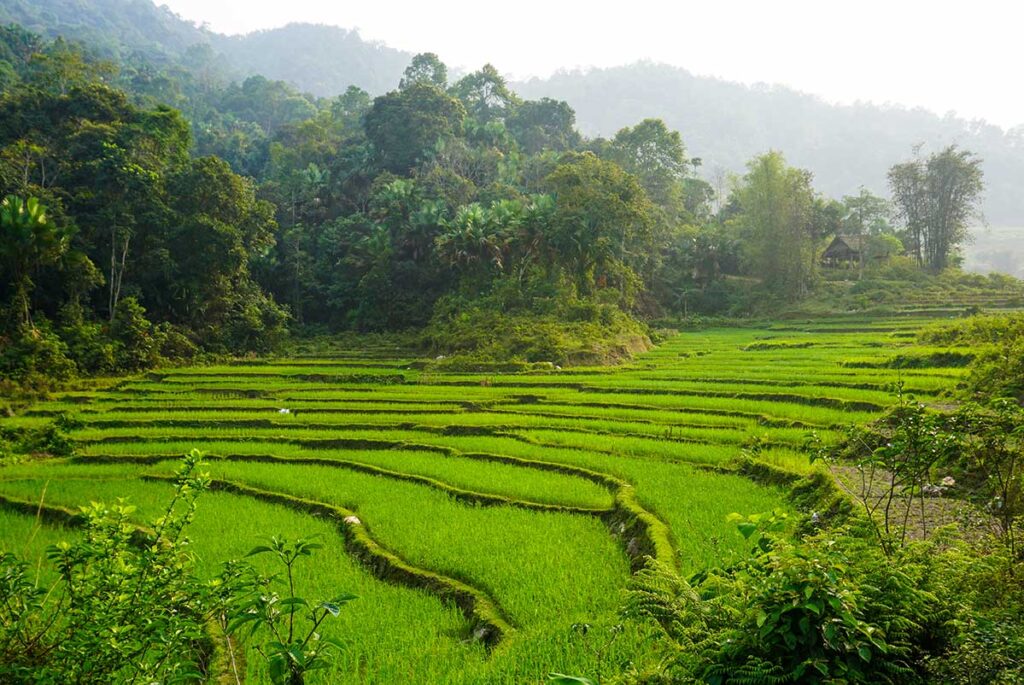
Located just outside of Ha Giang City, Thon Tha offers an authentic countryside experience. Picture-perfect rice fields, buffalo grazing, ducks wandering, and traditional stilt houses dot the landscape, showcasing the essence of the Vietnamese countryside.
Although most of the rice fields are situated on flat terrain, you can still find a few smaller rice paddy fields that add charm to the village. Thon Tha provides a few homestays, allowing you to embark on small treks or rent a motorbike to explore the nearby villages and enjoy the beautiful countryside.
#6. Lung Cu
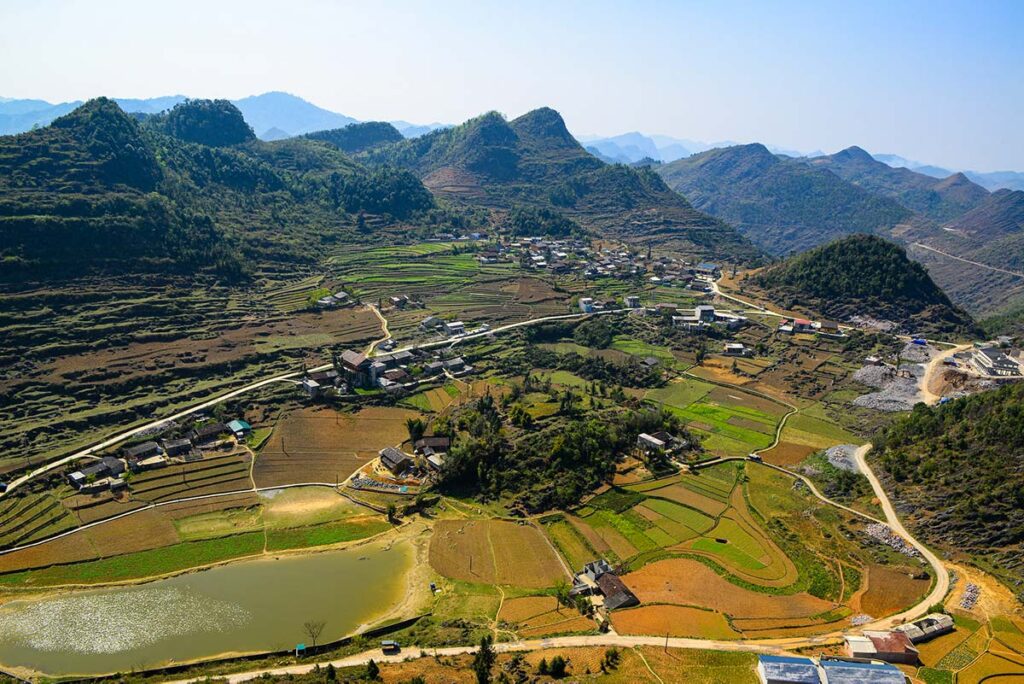
As the northernmost point of Vietnam, Lung Cu captivates with its beautiful rice fields, albeit on a smaller scale compared to the grandeur of Hoang Su Phi. Nestled in a valley, the rice fields are accompanied by blooming flower fields during certain seasons, enhancing the visual splendor.
The Lo Lo ethnic community resides in this area, living in houses made of yellow clay, further enriching the cultural experience. For a truly immersive and off-the-grid exploration, consider staying in one of the homestays available here, embracing the remoteness and becoming one with the stunning landscapes.
FAQ about rice fields in Ha Giang & harvest season
Are there terraced rice fields in Ha Giang?
Yes, Ha Giang is home to stunning terraced rice fields, particularly in areas like Hoang Su Phi. These terraces offer a breathtaking landscape, especially during the harvest season.
What is better: Sapa or Ha Giang?
Both Sapa and Ha Giang offer unique experiences and spectacular rice fields. However, Ha Giang is generally less touristy and provides a more authentic experience. If you’re interested in exploring a more untouched landscape and interacting with various ethnic communities, Ha Giang may be the better choice for you.
What is rice harvest season in Ha Giang?
The rice harvest season in Ha Giang usually occurs from September to early October. This is when the fields turn a beautiful golden color, creating a mesmerizing view.
What is the best time to see the rice fields in Ha Giang?
The best time to witness the beauty of the rice fields is shortly before the harvest season, generally from August to early September. The fields are lush and green, slowly turning golden as the harvest approaches.
When is rice being planted?
Rice is typically planted in Ha Giang between April and May. This is when the fields are flooded and offer a unique beauty of their own, characterized by the reflections of the surrounding landscape in the water.
What is the best way to see the rice fields in Ha Giang?
Trekking is arguably the best way to fully experience the stunning rice fields in Ha Giang. It allows you to get up close to the terraces and offers opportunities for more genuine interactions with local farmers.
What is the best place to see the rice fields in Ha Giang?
The best place to witness the rice fields in all their glory is Hoang Su Phi. This area is renowned for its meticulously crafted terraced fields and offers some of the most stunning vistas.
Are there rice fields along the Ha Giang Loop?
There are some rice fields along the Ha Giang Loop, particularly in areas like Mau Due for terraced rice fields and Du Gia for normal rice fields in the valley. However, for the most stunning terraced rice fields, it’s better to venture off the beaten track to Hoang Su Phi, which is quite far from the loop.
How do locals harvest rice in Ha Giang?
Rice harvesting in Ha Giang is often done manually, using traditional methods. This involves cutting the rice stalks individually and then threshing the grains by hand or using small, mechanical threshers. It’s a labor-intensive process that offers a glimpse into the local way of life.
Is it possible to participate in rice planting or harvesting?
Yes, some homestays and tour operators offer the opportunity to participate in rice planting or harvesting as part of a cultural exchange program. This gives you a chance to learn about traditional farming techniques and the importance of rice in Vietnamese culture.


